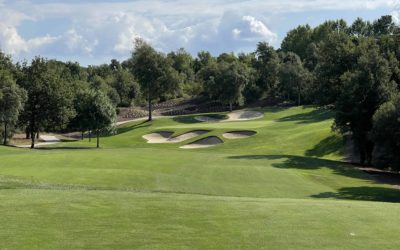A Town with History
The small town of Prestwick in Ayrshire has a unique place in golf history as the birthplace of the Open Championship. Way back in 1860, the first Open Championship was played at Prestwick Golf Club. Only eight players took part and the championship was won by Willie Park Snr, of Musselburgh, who was two shots ahead of Old Tom Morris.
Surprisingly, for a town of fewer than 15,000 people, Prestwick has three golf courses, two links and one parkland. Prestwick St Nicholas Golf Club is the other links course and the 26th oldest golf club in the world.

Prestwick St Nicholas Golf Club started life as Prestwick Mechanics Club in 1851 with 28 members, one of whom was Old Tom Morris. The Mechanics Club played on the Prestwick Links along with members of the Prestwick Golf Club. The Mechanics changed their name to Prestwick St Nicholas Golf Club in 1858 and two of their members played in the first Open Championship in 1860.
The club got its own course in 1892 and the course is the only links on the Ayrshire coast where you have a view of the Firth of Clyde from every hole. It also has wonderful views out over the firth to the Isle of Arran and Ailsa Craig. That’s a quick run through the history, now what about the course?
The Links
The links course at St Nicholas isn’t a long one. With only three tees to choose from, it ranges from 5415 yards to 6043 yards and is a par 69 from the white and yellow tees and a 68 from the red ones. We played from the white tees so all yardages mentioned are from those tees.
The opening hole is short at only 338 yards although you can’t see the green from the tee. The fairway is generous so a driver is a good option. There are two dunes/mounds, one on each side of the fairway so your line is down the middle. If you don’t hit it far enough you might have to walk forward to get a view of the green and see where the pin is. It’s only a short iron or wedge in but it’s tricky as you can’t see your target.
That is not a problem from the second tee. The 2nd is a lovely par 3. From the elevated tee, the hole is 172 yards long with a big tier in the middle of the putting surface. Make sure you take enough club to reach the pin. Don’t be short as there is a high bank up to the green making an up and down very challenging.
Birdie Chance
 The 3rd hole
The 3rd hole
The third is a short par four which is drivable for long hitters. It plays downhill but the green is elevated so you need to run your tee shot up the bank to drive the green. It’s a great birdie chance if you get your drive close to the green.
On the way to the fourth tee, you cross a public road which splits the course in two. Holes 1, 2, 3 and 16, 17 and 18 are on one side with the rest of the course, over the road.
Holes 4 and 5 are par 4’s which go in opposite directions. The fourth hole is a strong par 4 especially into the wind as it was when we played it. It’s a blind tee shot over a ridge to a reasonably wide fairway. Your approach shot needs to avoid the front bunkers to make par. The 5th hole is shorter, plays downwind and moves slightly left to right. It offers a decent chance of birdie as it’s a short iron into the green.
The 6th and 7th holes have blind tee shots. Aim at the marker pole on the 6th but beware of out-of-bounds on your right. A decent tee shot will leave another short iron into a green which is right next to the sea. The only way you will get a look at the green off the tee on the 7th, a 454-yard par 4, is if you play long and left of the ridge running diagonally across the fairway. It’s a long second shot into an undulating green and you will take 5 here more often than you will make a 4.
Quirky Hole
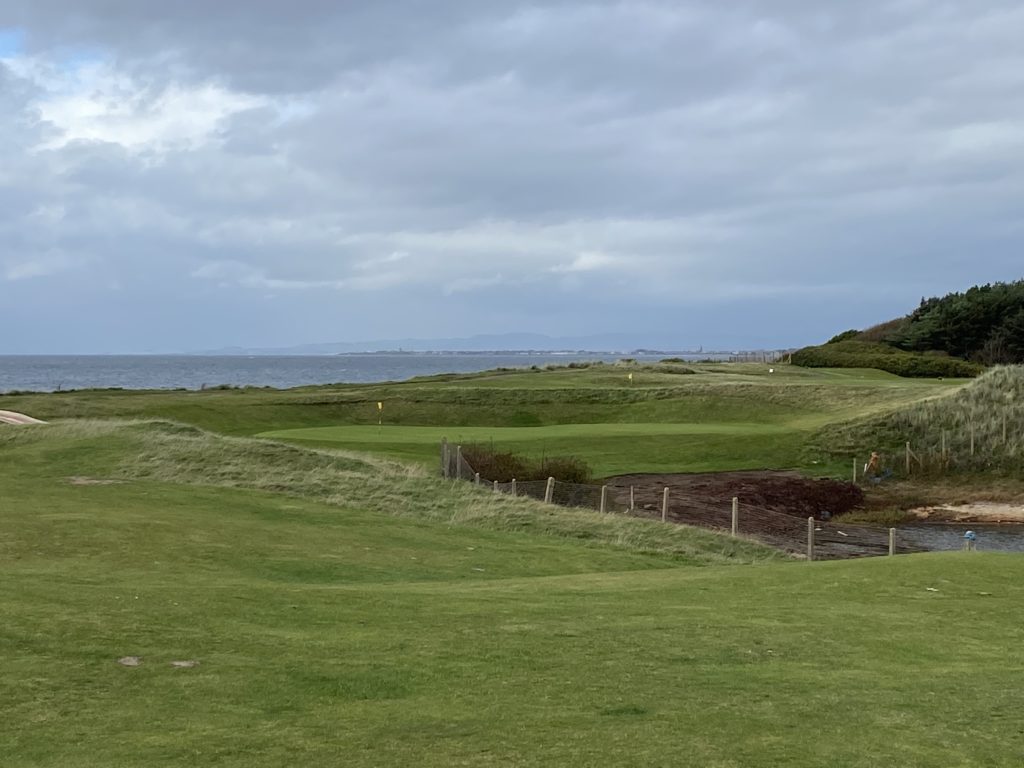 Your approach on the 8th
Your approach on the 8th
The 8th is unlike any other hole on the course. There is a quarry to your right where work is underway to add decorative stonework and tidy up the area. As the quarry is out of bounds, the safe play is to take a long iron or hybrid and play left onto the large plateau. Just be careful that you don’t go too far as you could end up with a difficult lie for your second shot. From the plateau, it’s a short iron into a green that sits below you. Judging your approach is key as the green is wide but not deep.
The closing hole on the front 9 is another short par 4 where you have a blind second shot to a green which sits above you. It’s really difficult to get it close to the pin on a green you can’t see.
The Back Nine
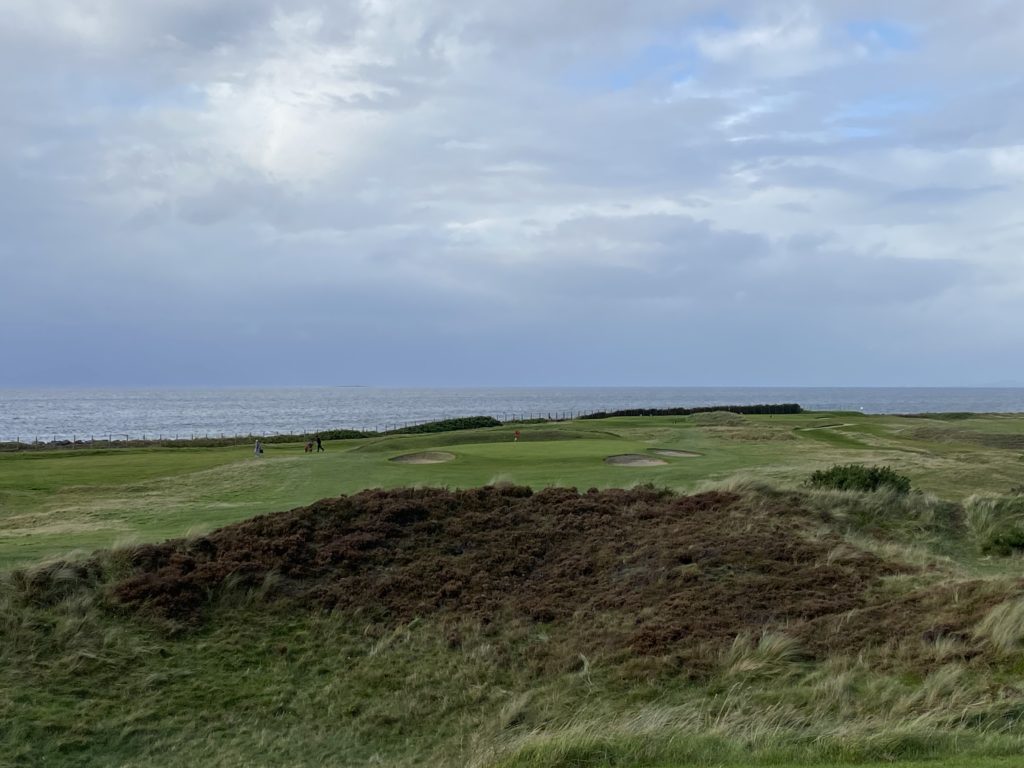 The par 3 10th
The par 3 10th
The 10th is another lovely par 3. From the elevated tee, the green is a small target to hit from 166 yards, especially if the wind is off the water. The 11th is the only par 5 on the course. At 536 yards, it’s a 3-shot hole for most, especially as the green is 20 yards over a high bank which will repel most second shots.
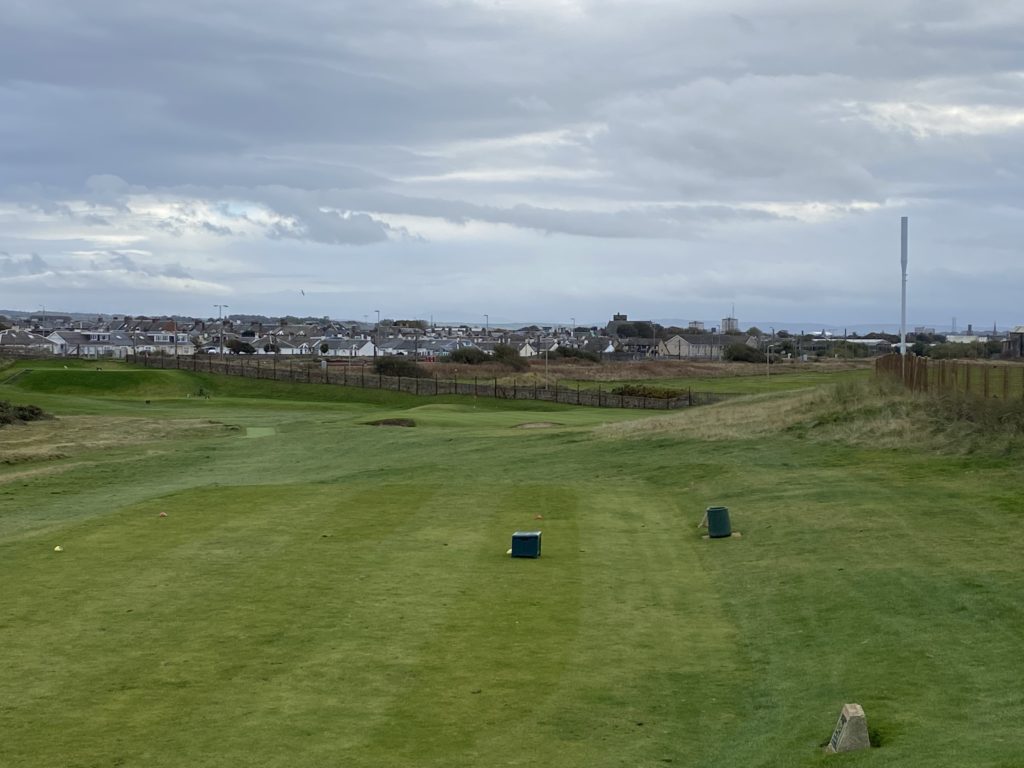 The 12th hole
The 12th hole
The 12th is a tricky par 3 of 183 yards at the far end of the course. It plays downhill but again, any wind plays havoc with your club selection. The green is well protected and you will not see the bottom of the flag if it’s on the right side of the green.
A Run of Fours
Holes 13 to 17 are all par 4’s. The 13th is the longest on the course at 457 yards. It plays slightly shorter as the tee is high up giving you more hang time and therefore more distance off the tee. It’s a strong par 4 and the last really difficult one on the way home. The 14th is a straightforward hole. A generous fairway means you can open your shoulders and have a dig. It’s 411 yards and played a drive and a 9 iron for us. The benefits of links fairways, eh?
The 15th is the last hole before you cross the road again. It’s short at 285 yards but the green sits at an angle and is well protected by four greenside bunkers and one short and right. It is worth having a bash at the green as even ending up in a greenside bunker, you have a great chance of getting up and down.
A Tight Finish
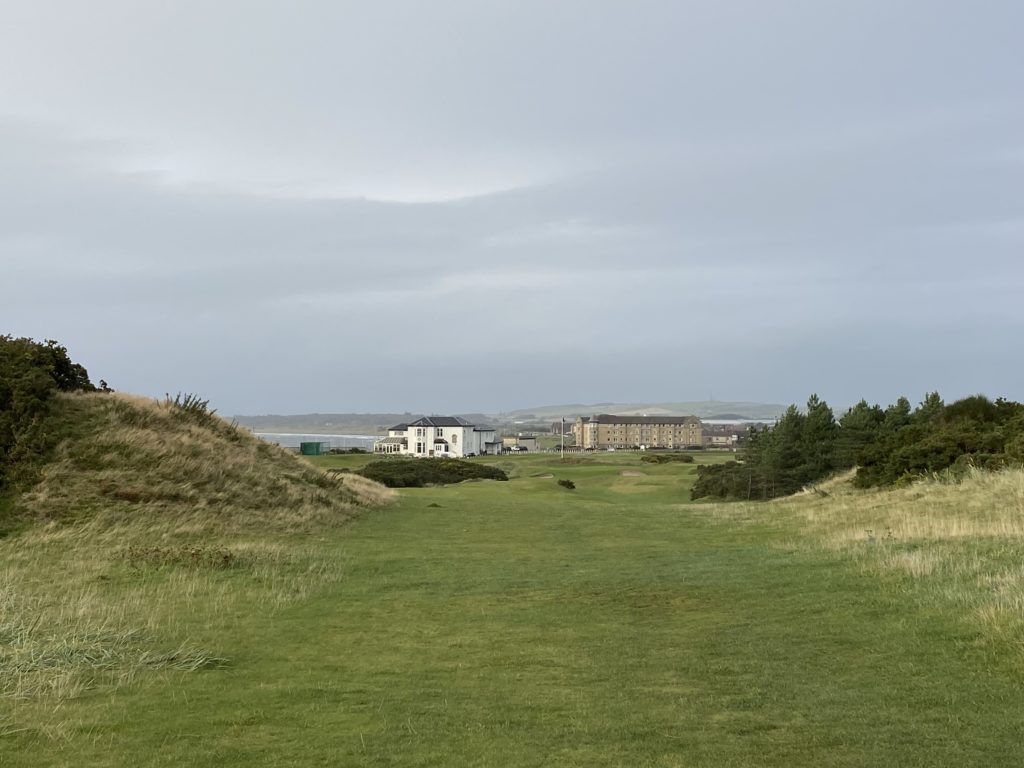 The 16th Hole
The 16th Hole
The 16th hole is challenging and looks tight from the tee. There is a bit more room down the fairway but it’s undulating the further you go. You can hit driver but we chose to go with a hybrid which gave us a flat lie and an 8 iron into a raised green. The green is small so hitting the middle of it will give you a good look at birdie.
The 17th is another short par 4 of 300 yards. Pick your club off the tee that will leave you the easiest pitch shot in. Down the middle is the line but beware as there are a couple of hidden bunkers and gorse just to the right.
The final hole is a long par 3. At 225 yards, it plays slightly uphill and will give you the fear as you stand on the tee. All the way up the right is the club’s car park and out of bounds. The clubhouse is level with the green and between them is the first medal tee. You can’t bail out left either as there is a gully, heather, and gorse bushes so pick your club and trust your swing! It’s a cracking hole to finish.
Final Thoughts
Prestwick St. Nicholas, in many ways, is typical of courses built in the 1800’s. The course is built on the land that was available at the time which sometimes means that holes are tight to each other, sometimes squeezed in and not very long by today’s standards. If your short game is tight, you will have plenty of opportunities to make birdies with 6 par 4’s under 350 yards. Playing here is very much about positioning your tee shot in the best position to leave a line into wherever the pins are on the greens.
We played here in early October and the course was in very good condition. The fairways and putting surfaces were excellent and due to the time of year, the rough wasn’t as penal as it might be.
We highly recommend Prestwick St Nicholas for those that want to play a traditional Scottish links course where length is not a big factor. You never know, maybe you will also make a few birdies. Isn’t that the definition of a good day on the course?
Thank you to the Secretary/Manager Graham MacKenzie for hosting us and for the courtesy of the course.
At a Glance:
- 33 miles down the A77 from Glasgow City Centre
- Traditional links course
- Comfortable clubhouse with great service staff
- Small, well-stocked professional shop
- Small practice putting green
- Short practice area with covered bays

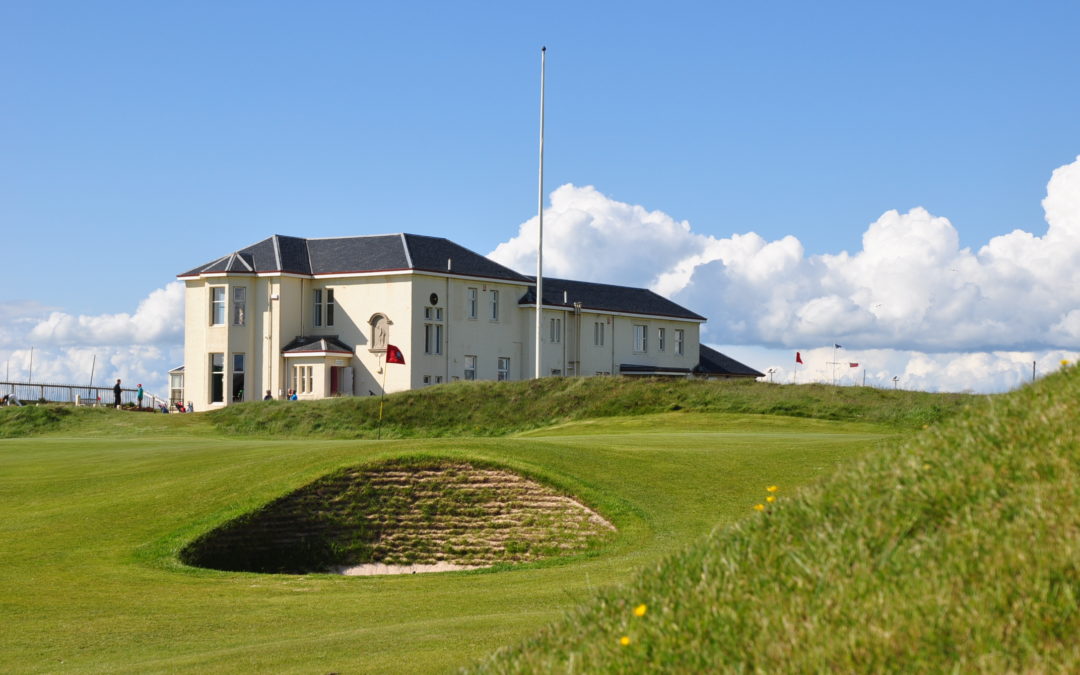
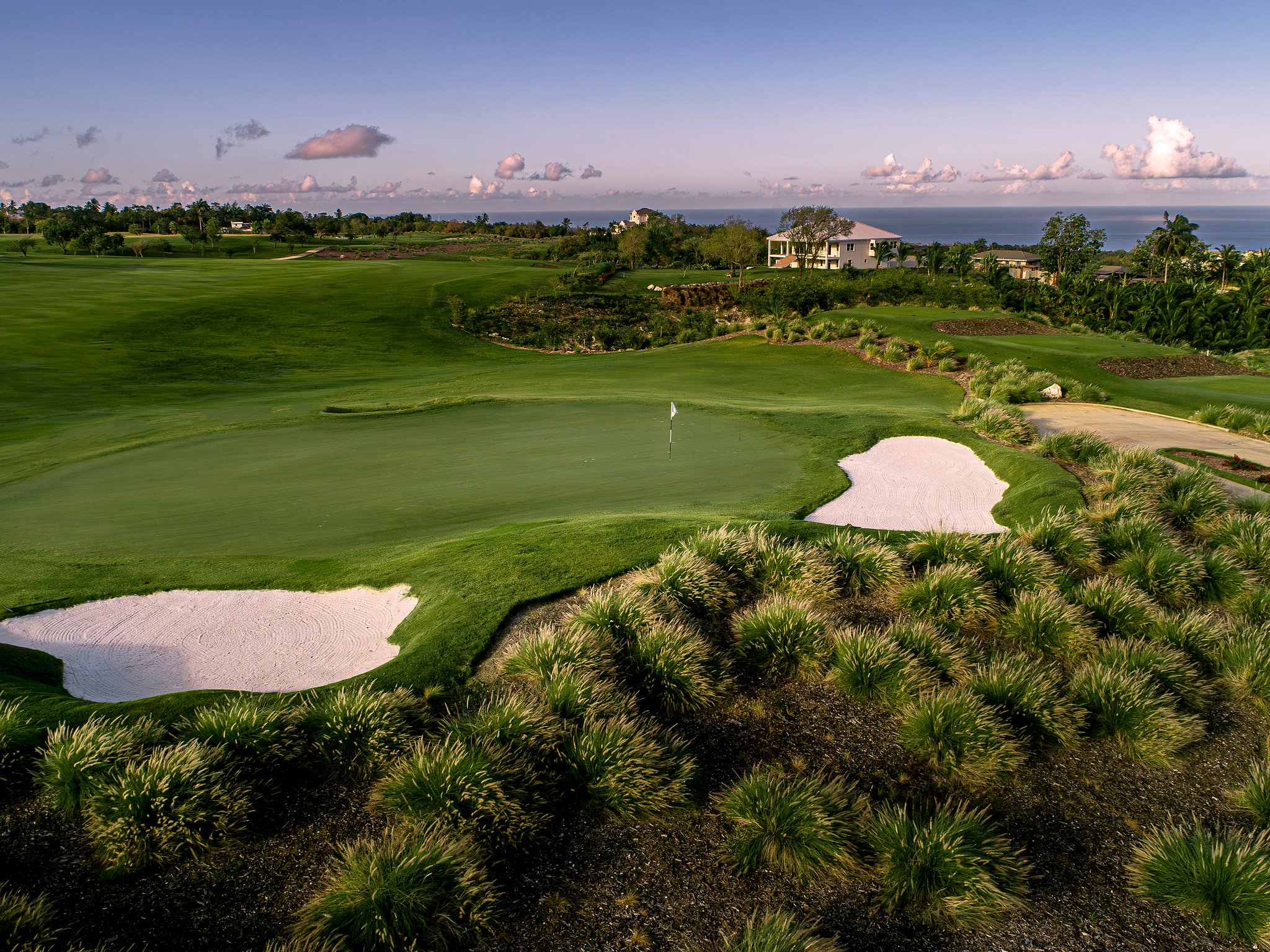
 0
0









